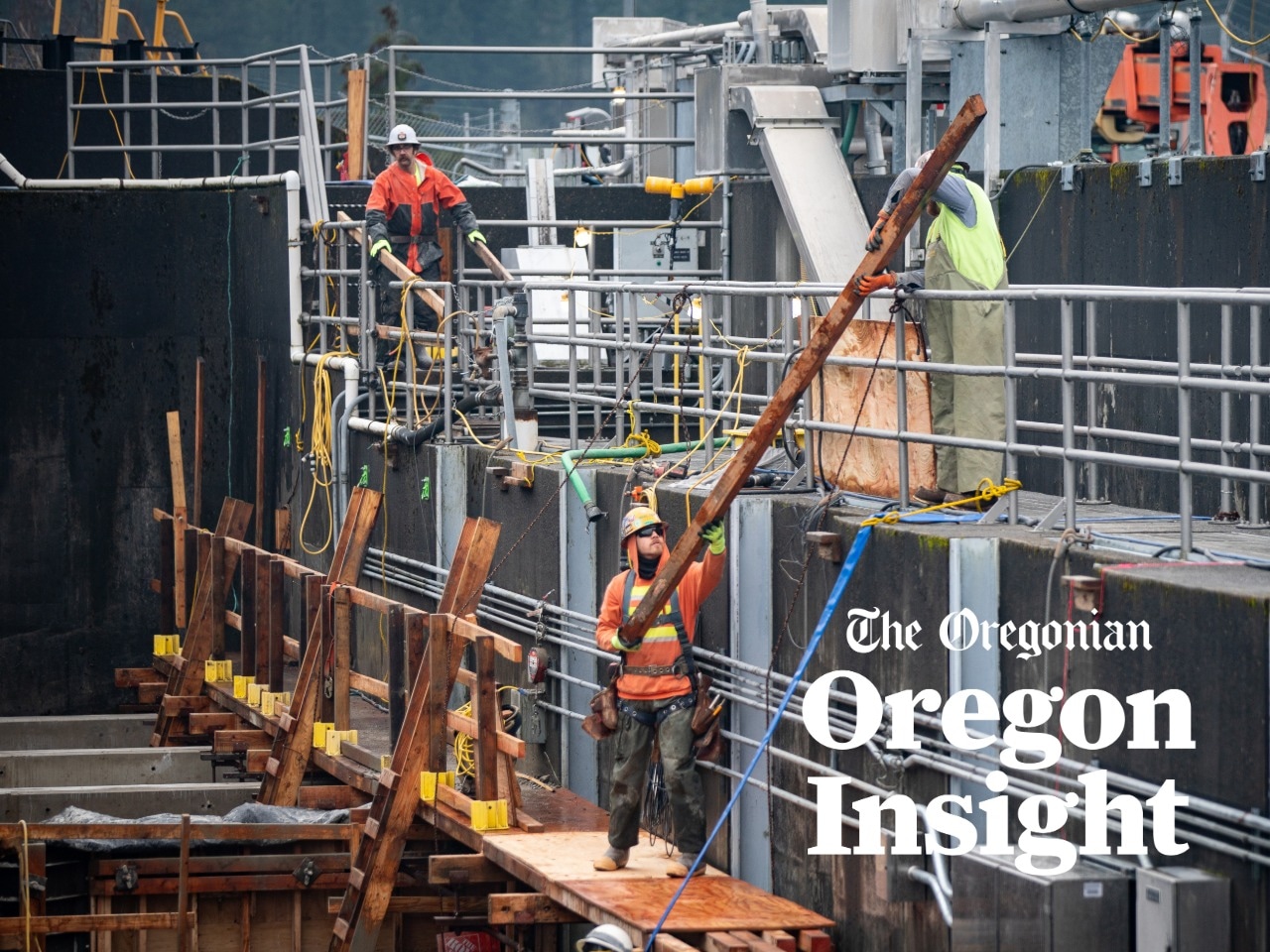Oregon construction work rebounded rapidly after the pandemic recession, driven to an all-time high by major public projects, industrial expansion and housing developments that had been in the works for years.
Much of that work is now complete and the state’s construction industry has shifted into reverse.
While construction employment remains high by historical standards — it’s still above pre-pandemic levels — the number of jobs has dropped 4% in the past 12 months, according to the most recent data from the Oregon Employment Department. That is amplifying a broader decline in the state’s labor market.
“One possible contributing factor for this is the low level of housing starts,” said Anna Johnson, economic analyst with the Oregon Employment Department. She notes building permits for homes have declined from around 1,800 a month early in 2022 to around 1,200 now.
“This decline is residential housing starts matches with the beginning of rising interest rates in early 2022, which have stayed high in recent years,” Johnson said. She said a 30-year, fixed-rate mortgage averaged about 3% in early 2022. Interest rates rose along with inflation and have been above 6% for the better part of three years. They’re near 7% today.
Oregon is far behind on Gov. Tina Kotek’s goal of building 36,000 new homes a year to meet pent-up housing demand.
With inflation continuing to ebb, interest rates may come down. That could help spur investment in new housing and other construction, in Oregon and all across the country, by lowering the cost of borrowing for home buyers and homebuilders.
There are other hopeful signs for Oregon builders, too.
In May, Portland voters approved $1.8 billion in bonds to pay to rebuild three high schools and upgrade some elementary and middle schools. And construction is getting underway on two separate Portland concert venues.
The state’s building industry may face fresh headwinds, though, if the Trump administration’s trade war raises the cost of building materials or if its immigration crackdown disrupts the labor supply.
And Intel’s plans for a multibillion-dollar expansion of its Hillsboro research factory appears to be in limbo, with the chipmaker slashing costs amid a sustained downturn in its business. Intel’s facilities are so large that they can buoy the state’s entire construction industry — and leave a void when the chipmaker isn’t growing.
State economists are warning about a broader decline in blue-collar work, with Oregon factory employment down more than 3% in the past year.
“I’ve talked in the past about a recession in manufacturing and construction,” state economist Carl Riccadonna told a legislative committee last month. “Those by-industry recessions are very much on pace.”
This is Oregon Insight, The Oregonian’s weekly look at the numbers behind the state’s economy. View past installments here.
If you purchase a product or register for an account through a link on our site, we may receive compensation. By using this site, you consent to our User Agreement and agree that your clicks, interactions, and personal information may be collected, recorded, and/or stored by us and social media and other third-party partners in accordance with our Privacy Policy.
